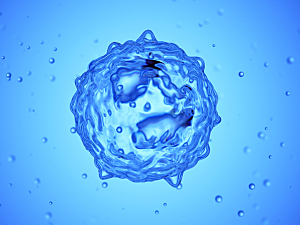Previous research shows that blood eosinophil count and eosinophil cationic protein (ECP) concentration are risk factors for cardiovascular disease.
Brigham and Women’s Hospital researchers co-led a recent study investigating whether eosinophils and ECP contribute to vascular calcification and atherogenesis. The results, published in the European Heart Journal, are the first to identify two ECP receptors and indicate that blood eosinophil count and blood ECP levels have a strong and positive correlation with the coronary vascular calcium (CAC) of several arteries and aortas.
In this Q&A, co-senior author Guo-Ping Shi, ScD, a principal investigator in the Brigham’s Division of Cardiovascular Medicine, highlights important findings from the study and its clinical implications. Dr. Shi worked with several colleagues on the study, including co-senior author Junli Guo, PhD, of Hainan Medical University in China, and Zhaojie Meng, PhD, a fellow in Dr. Shi’s lab and co-first author on the paper.
Q. Why is your team investigating the role of eosinophils in cardiovascular conditions?
Dr. Shi: Blood eosinophil count and ECP concentration are known risk factors for cardiovascular disease. Previous research suggests eosinophils act differently among various cardiovascular conditions, but it has remained unexplained why this is the case.
We recently published a series of studies showing that eosinophils play reparative roles in protecting cardiomyocytes from death and cardiac fibroblasts from fibrosis in myocardial infarction (Nat Commun), as well as cardiac hypertrophy and heart failure (Cardiovasc Res). Our team also found that eosinophils protected mice from abdominal aortic aneurysms (Circ Res). In contrast to these findings, this most recent study showed that eosinophils are pathogenic in atherosclerosis.
Q. What were the important findings from this study?
Dr. Shi: In high-fat diet-induced atherosclerosis in mice, eosinophil deficiency reduced atherogenesis with fully blocked aortic wall calcification. Mechanistic studies showed that eosinophils release their ECP and eosinophil-derived endotoxin (EDN), but not their Th2 cytokines (such as IL4 and IL13) to induce smooth muscle cell (SMC) calcification.
Most importantly, we report that ECP and EDN use bone morphogenic protein receptors (BMPR) BMPR-1A and BMPR-1B as their receptors on SMCs to activate Runt-related transcription factor-2 (Runx2) and stimulate the expression of calcification-associated proteins. Like high-sensitivity C-reactive protein, ECP is a broadly used inflammatory disease biomarker that was reported 50 years ago, but how this protein works and whether it has a receptor was previously unknown.
This study is the first to report its receptor and define its pathogenic role in atherosclerosis by inducing vascular SMC calcification.
Q. What are the clinical implications of your findings?
Dr. Shi: In a cohort of 5,864 men from the Danish Cardiovascular Screening trial, this study reported that blood eosinophil counts are strongly and positively associated with the CAC scores on the coronary artery, aortic valve, aortic arch, infrarenal aorta, and iliac artery. We also measured plasma ECP concentrations and found that blood ECP levels correlated strongly and positively with the CAC of coronary artery, abdominal suprarenal aorta, mitral valve, aortic arch, descending aorta, renal artery, infrarenal artery, and iliac artery.
These findings suggest that the blockade of ECP and EDN on BMPRs and silencing of the Smad-1/5/8-Runx2 signaling pathway may have therapeutic potential to control eosinophil-associated human diseases, including cardiovascular disease.
